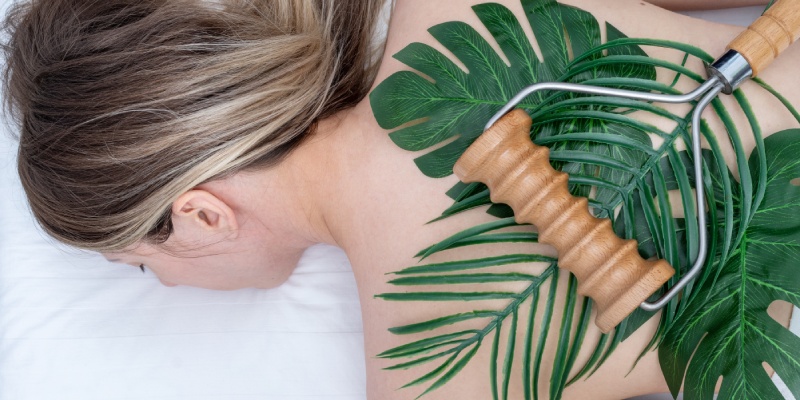
Tailbone pain, medically known as coccydynia, can be a debilitating condition affecting one’s quality of life. From discomfort while sitting to difficulty in performing daily activities, tailbone pain demands effective and natural solutions. In this article, we delve into the Ayurvedic Treatment for Tailbone Pain, exploring its principles and remedies for soothing Coccydynia naturally.
Understanding Ayurveda
Ayurveda, an ancient system of medicine originating from India, views health as a harmonious balance between the body, mind, and spirit. The holistic approach of Ayurveda focuses on preventing and treating ailments by promoting balance in all aspects of life.
Causes of Tailbone Pain
The pain can result from various factors, including:
- Trauma and Injuries: Falls or direct impact on the tailbone can lead to inflammation and pain.
- Prolonged Sitting: Sitting for extended periods, especially on hard surfaces, can strain the coccyx.
- Infections and Inflammation: Infections in the surrounding area or inflammatory conditions may contribute to pain.
- Poor Posture: Incorrect posture while sitting or standing puts undue pressure on the tailbone.
- Degenerative Joint Conditions: Conditions like arthritis affecting the joints near the tailbone can cause pain.
- Childbirth: Injuries during childbirth, particularly in the coccyx area, may result in persistent pain.
- Excess Body Weight: Being overweight or obese can strain the coccyx and exacerbate pain.
- Psychological Stress: Mental stress and tension can manifest physically, contributing to tailbone discomfort.
Effective Ayurvedic Treatment for Tailbone Pain

Ayurveda identifies coccydynia as an imbalance in the body’s energies or doshas. By restoring this balance through natural and home remedies, Ayurveda aims to provide long-lasting relief from Tailbone Pain.
Let’s explore various powerful Ayurvedic Treatment options for Tailbone Pain:
Home Remedies For Tailbone Pain
Explore these eight potent home remedies recommended in Ayurveda to alleviate and soothe tailbone pain discomfort naturally.
- Ashwagandha: Known for its adaptogenic and anti-inflammatory properties, Ashwagandha provides relief from inflammation and pain in the tailbone area.
- Turmeric: The active compound curcumin in turmeric possesses potent anti-inflammatory and analgesic effects, making it a valuable remedy for coccydynia.
- Guggul: Guggul aids in reducing inflammation and supports joint health, offering comprehensive relief from coccygeal discomfort.
- Boswellia: Boswellia extracts have anti-arthritic properties, providing effective management of Coccydynia.
- Triphala: A combination of three fruits, Triphala aids in detoxification, supporting the body’s natural healing process.
- Ginger: Ginger’s anti-inflammatory nature helps alleviate pain and improves overall joint function.
- Eucalyptus Oil: The topical application of eucalyptus oil provides a soothing effect, reducing localized pain and discomfort.
- Licorice Root: Licorice root, with its anti-inflammatory and analgesic properties, contributes to pain relief and overall healing.
Yoga Pain Relief
Discover six specific yoga poses that target tailbone pain, offering relief and improving flexibility in the affected area.
- Child’s Pose (Balasana): Stretches and relaxes the lower back, easing tension in the tailbone area.
- Cat-Cow Stretch: Promotes flexibility in the spine, reducing stiffness in the tailbone region.
- Downward-Facing Dog (Adho Mukha Svanasana): Strengthens the back and pelvic muscles, supporting coccygeal health.
- Pigeon Pose (Eka Pada Rajakapotasana): Opens the hips and stretches the lower back, providing relief from Coccydynia.
- Bridge Pose (Setu Bandhasana): Strengthens the spine and buttocks, enhancing support for the tailbone.
- Supta Baddha Konasana (Reclining Bound Angle Pose): Relaxes the pelvic region, reducing strain on the tailbone and lower back.
Ayurvedic Diet
Embrace these dietary recommendations, including foods to eat and avoid, to support natural healing and reduce inflammation in the tailbone area.
Food to Eat
- Turmeric and Ginger: Incorporate these anti-inflammatory spices into your meals or prepare a soothing turmeric and ginger tea.
- Omega-3 Fatty Acids: Include fish like salmon, flaxseeds, chia seeds, and walnuts for their anti-inflammatory properties.
- Warm Soups and Broths: Opt for nourishing soups and broths, easy to digest and comforting for the digestive system.
- Leafy Greens: Consume kale, spinach, and other leafy greens rich in vitamins and minerals to support the healing process.
- Fruits with Bromelain: Pineapple, containing bromelain, is known for its anti-inflammatory effects.
- Probiotic-Rich Foods: Yogurt, kefir, and fermented foods support gut health, contributing to overall well-being.
- Whole Grains: Choose whole grains like brown rice and quinoa for their nutritional value and digestive benefits.
- Nuts and Seeds: Almonds, walnuts, and flaxseeds provide healthy fats and essential nutrients.
Food to Avoid
- Spicy Foods: Limit the intake of spicy foods as they may exacerbate inflammation in the body.
- Processed Foods: Reduce or eliminate processed foods, which often contain additives and preservatives that can contribute to inflammation.
- Highly Caffeinated Beverages: Limit coffee and energy drinks, as excessive caffeine intake can contribute to inflammation and discomfort.
- Sugary Treats: Minimize the intake of sugary snacks and desserts, as they can contribute to inflammation and compromise overall health.
- Fried and Fatty Foods: Avoid excessive consumption of fried and fatty foods, as they can contribute to inflammation and digestive issues.
- Dairy Products: Some individuals may find relief by reducing dairy consumption, as certain dairy products can contribute to inflammation for some.
- Acidic Foods: Cut back on highly acidic foods, such as citrus fruits and tomatoes, as they may aggravate inflammation.
Ayurvedic Lifestyle Changes
Implementing these six lifestyle modifications rooted in Ayurveda can significantly aid in managing and preventing recurring tailbone pain while promoting overall well-being.
- Mindful Sitting: Maintain proper posture and use cushions or ergonomic chairs to support the tailbone.
- Regular Movement Breaks: Avoid prolonged sitting; incorporate short walks or stretches throughout the day.
- Stress Management: Practice relaxation techniques like meditation or deep breathing to reduce stress.
- Warm Compress: Apply a warm compress to the tailbone area to ease tension and promote blood flow.
- Adequate Sleep: Ensure sufficient, restful sleep to support the body’s natural healing processes.
- Hydration: Drink plenty of water to keep the body hydrated and aid in detoxification.
Precautions and Considerations

While Ayurveda offers natural remedies, it is essential to know when to seek professional medical advice.
Precautions for individuals with specific health conditions ensure a safe and tailored approach to treatment.
- Consultation with Healthcare Professional: Before initiating any Ayurvedic treatment, it’s essential to consult with a healthcare professional to ensure the chosen remedies align with your overall health and medical history.
- Individualized Ayurvedic Approach: Discomfort in the lower spine can have diverse underlying causes. Customize your Ayurvedic approach by seeking advice from an Ayurvedic practitioner to address your specific condition.
- Monitoring for Allergic Reactions: As with any herbal remedy, be vigilant for potential allergic reactions. If you experience any adverse effects, discontinue use and consult a healthcare provider promptly.
- Consistency in Ayurvedic Practices: Ayurveda emphasizes consistency. Adhering to recommended herbal remedies, dietary changes, and lifestyle adjustments regularly enhances their effectiveness in managing discomfort.
- Combination with Conventional Treatments: If you are already undergoing conventional medical treatments, coordinate with your healthcare provider when incorporating Ayurvedic practices to ensure compatibility and holistic care.
- Monitoring Progress and Adjustments: Regularly assess your progress with Ayurvedic interventions. If there are challenges or changes in your condition, consult with an Ayurvedic practitioner for adjustments to your treatment plan.
Conclusion
In conclusion, Ayurvedic treatment for tailbone pain offers a holistic and natural alternative to conventional methods. By addressing the root causes and promoting balance in the body, Ayurveda provides individuals with a path to soothe tailbone pain naturally.
FAQs
How does Ayurveda define Coccydynia?
Ayurveda defines Coccydynia as an imbalance in the body’s energies or doshas, seeking to restore balance through natural remedies.
What are the primary factors contributing to Coccydynia according to Ayurveda?
Ayurveda attributes Coccydynia to trauma, prolonged sitting, infections, poor posture, degenerative joint conditions, childbirth injuries, excess body weight, and psychological stress.
What are some effective Ayurvedic home remedies for tailbone pain?
Ayurvedic home remedies for tailbone pain include Ashwagandha, Turmeric, Guggul, Boswellia, Triphala, Ginger, Eucalyptus Oil, and Licorice Root.
Can yoga help alleviate tailbone pain, and if so, which poses are recommended?
Yes, yoga can help. Recommended poses for pain relief in Ayurveda include Child’s Pose, Cat-Cow Stretch, Downward-Facing Dog, Pigeon Pose, Bridge Pose, and Supta Baddha Konasana.
What dietary guidelines does Ayurveda suggest for managing tailbone pain?
Ayurvedic dietary guidelines involve incorporating anti-inflammatory spices like Turmeric and Ginger, Omega-3 fatty acids, warm soups, leafy greens, Bromelain-rich fruits, probiotic foods, and whole grains while avoiding spicy, processed, caffeinated, sugary, fried, fatty, and acidic food




